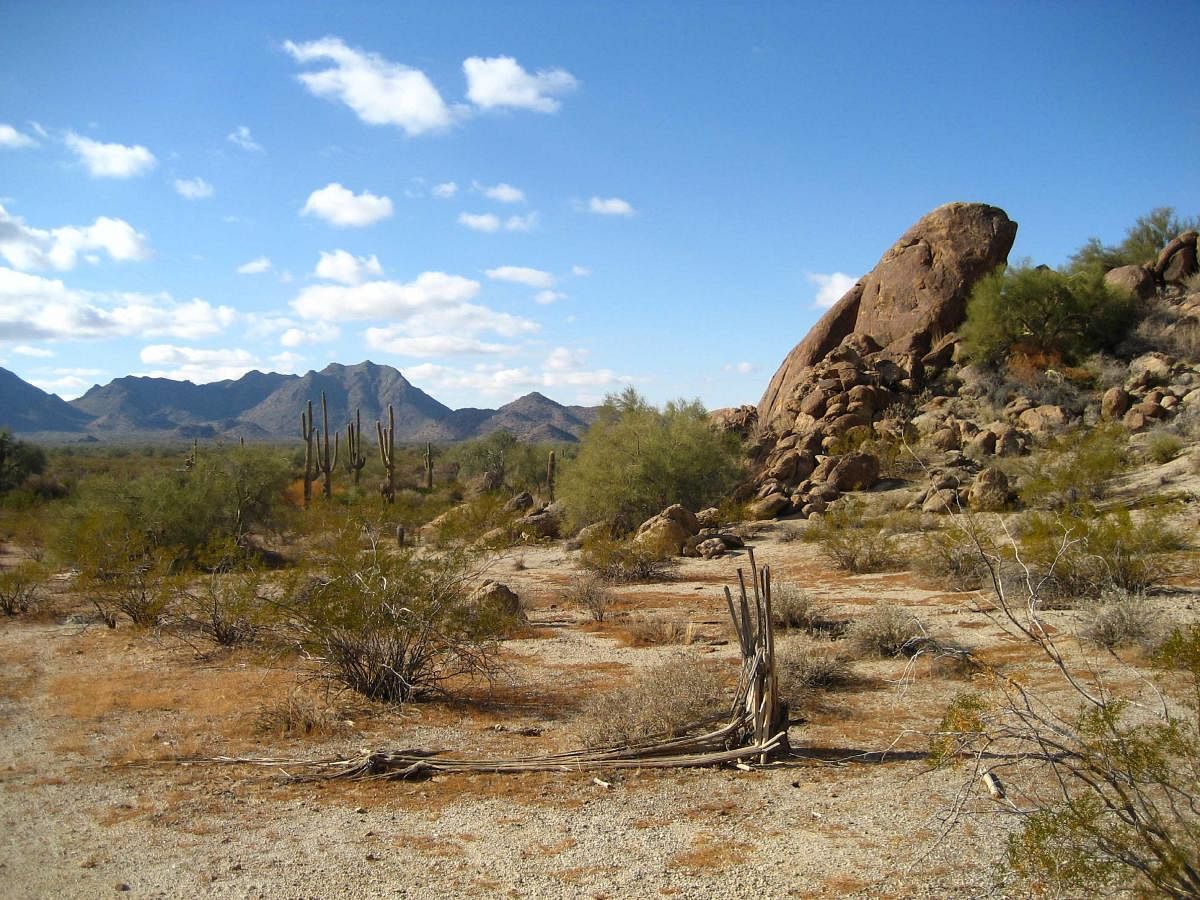
Dry and arid grasslands or deserts with scrubs and succulents - dry land ecosystems like these cover over 40% of the earth's surface. While one may dismiss them as 'waste lands', they are ecologically very significant and are home to a unique set of plants and animals, which are adapted to an environment devoid of water. In recent years, a crucial problem faces these ecosystems - the relentless pressure from human activities such as the change in land use in and around these ecosystems, coupled with climate change. In times like this, how do these ecosystems respond? Do they change? If so, what drives this change and up to what extent? These are some of the questions that a new study published in the journal The American Naturalist tries to answer.
Complex ecosystems, like that of dry lands, are known to undergo abrupt transitions from one state to another; they may turn from a desert into a grassland or change from being lush green forests to barren deserts. These transitions happen near 'critical points' - threshold points beyond which the system will not be able to return to its original state. Studies have shown that when these ecosystems are at the critical points, the dynamics of the ecosystem such as interactions between biotic and abiotic components, linked through nutrient cycling and energy flow, slows down drastically.
Some ecosystems have already undergone a process of 'hysteresis' - a phenomenon where reversal to a previous state requires substantial reversal in many aspects of the ecosystem - due to events like eutrophication of lakes and desertification of dry lands. This poses enormous challenges for restoration efforts as it happens over large time periods. In this study, the researchers have studied the dry land ecosystem in Tengger desert of Shapotou region in China, where a re-vegetation project was conducted in 1956. After three decades, the system underwent a transition from being a desert to moderate grassland.
For a dry land ecosystem, desert and vegetated states are hypothesised to be the alternative stable states. "Alternative stable states mean that under exact same conditions (like rainfall or temperature), an ecosystem can occur in very different states (low vegetation and high vegetation)," says Vishwesha Guttal, an author of the paper. "We often think that a change in state occurs because of a change in condition. This is not necessary when systems exhibit alternative stable states."
For this study, the researchers examined the extent of grass cover in a dry land ecosystem, about which they had long-term data for 60 years. Rainfall, a limiting factor for this ecosystem, was considered as a driver of the transition. Using computer models, the researchers came up with measurable properties of the dynamics of the ecosystem that are considered to be the key signatures of critical slowing down.
"In the initial 30 years or so, this area had very little grass cover. The system, within a matter of a few years, was in a new state with relatively high grass cover," remarks Vishwesha. This was why they concluded that the system has alternative stable states, he adds. But what caused these changes? The researchers had some surprising findings. "Typically, we would think that such a change happened because something about the system changed. Our guess could be that mean rainfall changed in this region, leading to higher grass cover. Surprisingly, we found that mean rainfall did not change but the grass cover had changed," says Vishwesha.
The results also showed that increasing variability in the driver (in this case, the rainfall), but not slowing it down, served as an indicator of random transitions in real ecosystems, when it was away from the critical point. The study is one of the few that combines mathematical theory with real ecosystem data. "We used ideas from nonlinear dynamics and bifurcations to understand and interpret ecosystem data," says Vishwesha.
The findings of the study may have huge implications in the field of ecology. "This is one of the few studies that show a fairly clear evidence for the existence of abrupt transitions in dry land ecosystems. Secondly, we showed that there may be some metrics using which we can anticipate such transitions. But since they are driven by many random fluctuations, it is hard to make predictions on when exactly they undergo transitions," concludes Vishwesha.